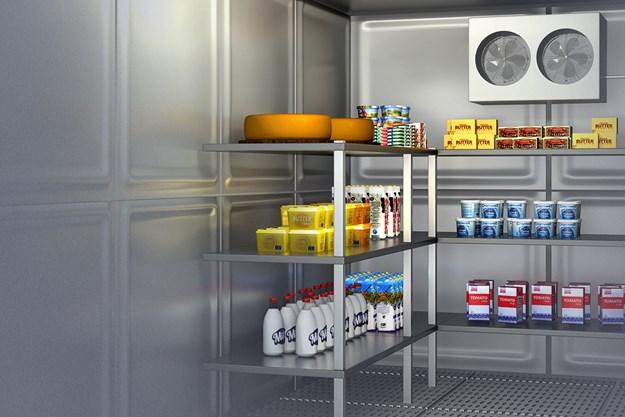What are Cold Rooms?
Cold room are specialized rooms or chambers designed to maintain a consistently low temperature for the storage or preservation of products, such as food, pharmaceuticals, chemicals, and other perishable items. They are typically used in commercial or industrial settings, such as restaurants, supermarkets, hospitals, and laboratories.
Cold rooms are often custom-built and are constructed with insulated walls, floors, and ceilings to prevent the escape of cold air. They also include a refrigeration system that cools the room to a specific temperature, usually ranging from -10°C to 10°C, depending on the items being stored.
These rooms are essential for preserving the quality and freshness of perishable items and extending their shelf life. They also help to prevent the growth of harmful bacteria and ensure that products remain safe for consumption or use.
The Benefits of Cold Rooms for Food Storage
Cold rooms offer numerous benefits for food storage, including:
Extended shelf life:
The low temperatures in cold rooms help to slow down the natural decay and degradation of food, thereby extending its shelf life.
Improved quality:
By slowing down the chemical and microbial reactions that cause food to deteriorate, cold rooms help to maintain the quality, flavor, texture, and appearance of food.
Reduced waste:
Longer shelf life and improved quality mean that food is less likely to spoil or go to waste, which can save money for businesses and reduce environmental waste.
Increased safety:
Cold rooms help to prevent the growth of harmful bacteria and microorganisms that can cause foodborne illnesses, making food safer for consumption.
Versatility:
Cold rooms can be designed to accommodate different types of food, such as fresh produce, meat, dairy, and frozen foods.
Cost-effective:
Investing in a cold room can help businesses save money in the long run by reducing food waste and spoilage, as well as improving the efficiency of their operations.
Regulatory compliance:
Many countries and regions have regulations that require food to be stored at specific temperatures.
In summary, cold rooms are an essential tool for businesses involved in food storage and distribution, helping to maintain the quality, safety, and freshness of food while reducing waste and costs.
The Future of Cold Rooms: Trends and Innovations
The future of cold rooms is likely to see several trends and innovations that will improve their efficiency, sustainability, and functionality. Here are some of the key developments to watch for:
Smart technology:
Cold rooms are likely to be equipped with smart sensors and monitoring systems that can track temperature, humidity, and other environmental factors. This data can be analyzed in real-time to improve energy efficiency, detect malfunctions, and optimize the storage conditions for different types of products.
Sustainable design:
Cold rooms will be designed with sustainability in mind, with features such as energy-efficient lighting, recycled insulation materials, and low-emission refrigerants. Additionally, renewable energy sources like solar and wind power could be integrated to reduce the carbon footprint of cold rooms.
Automation:
The use of automation technology will become more common in cold rooms. With robots or conveyor systems used to move products in and out of storage. This will improve efficiency, reduce labor costs, and decrease the risk of human error.
Modular construction:
The use of modular construction methods will make cold rooms more adaptable and easier to install. This will allow businesses to quickly expand or reconfigure their storage capacity as needed.
Improved food safety:
Cold rooms will continue to evolve to ensure that food safety standards are met or exceeded. For example, ultraviolet light systems can be installed to eliminate bacteria. Automated cleaning systems can ensure that the cold room is kept free of contaminants.
Cloud-based monitoring:
Cloud-based monitoring systems can enable remote access to cold room data. Allowing managers to check and control the temperature and humidity levels from anywhere with an internet connection.
Overall, the future of cold rooms is promising, with the potential to improve efficiency, sustainability, and food safety, while reducing costs and waste.
Conclusion
In conclusion, cold rooms are essential tools for businesses involved in the storage . Distribution of perishable products, such as food, pharmaceuticals, and chemicals. They help to maintain the quality, safety, and freshness of products while extending their shelf life and reducing waste. The future of cold rooms is likely to see several trends . Innovations that will improve their efficiency, sustainability, and functionality. These include the use of smart technology, sustainable design, automation, modular construction, improved food safety, and cloud-based monitoring. By embracing these developments, businesses can continue to benefit from the many advantages that cold rooms offer. While staying ahead of the curve in an increasingly competitive marketplace.



